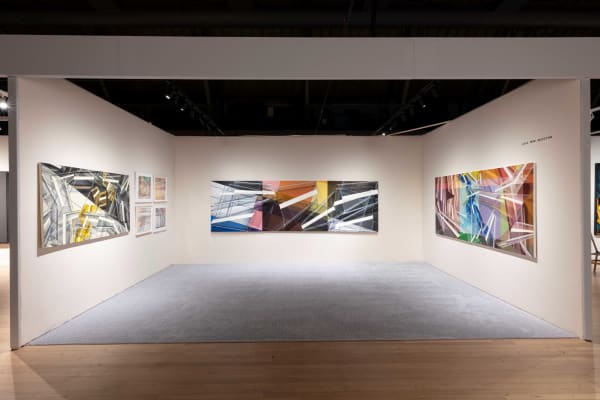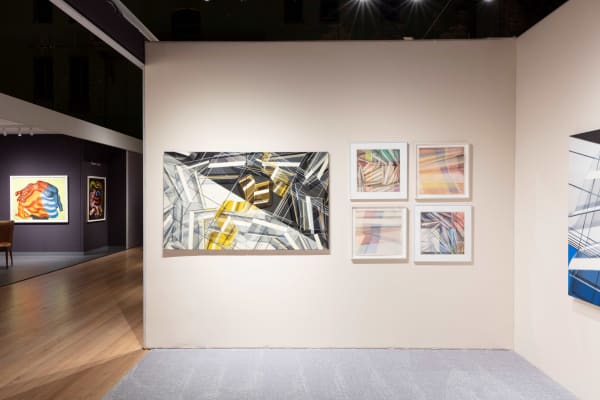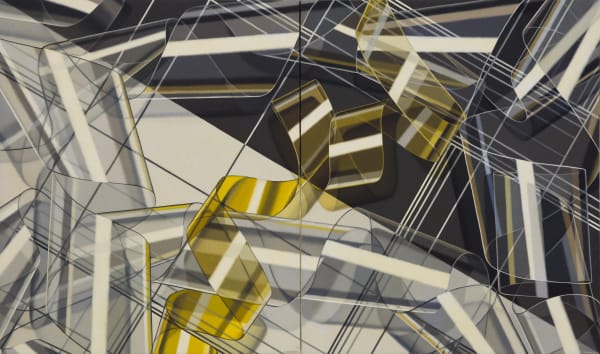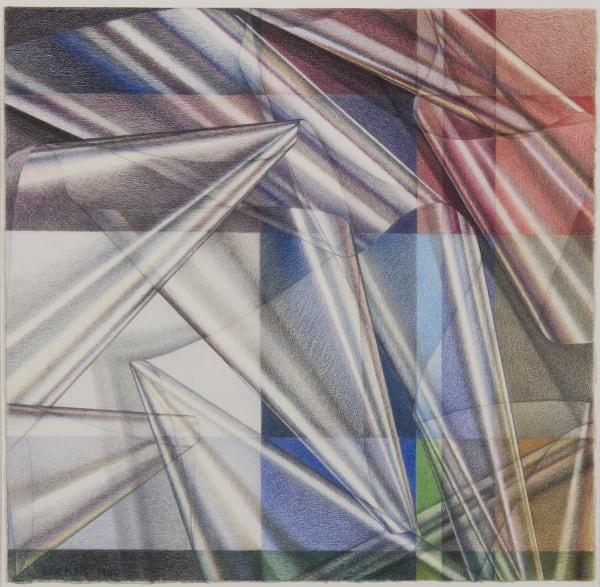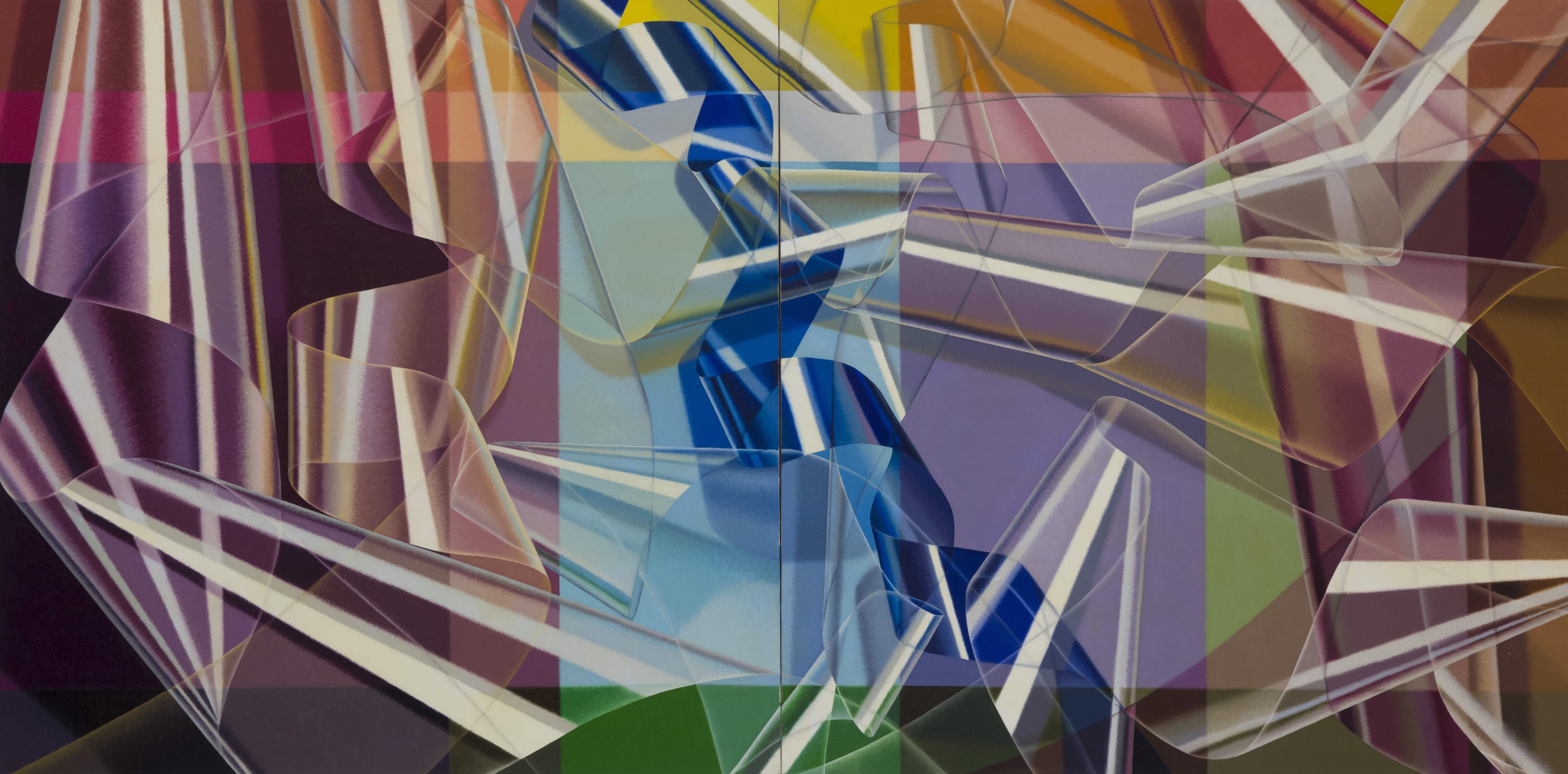Lula Mae Blocton: The Art Show, 2023: Organized by the ADAA
Skoto Gallery is pleased to present a selection of abstract paintings and drawings from the African-American artist Lula Mae Blocton’s Twisted Forms, Transparent Band series, 1981-96, for The Art Show 2023, organized by the ADAA at the Park Avenue Armory in New York City. A preview gala benefiting the Henry Street Settlement will be held on Wednesday, November 1, 2023.
From the very beginning of her career, Lula Mae Blocton has been described as a colorist. As a graduate student at Indiana University in the 1970s, she devoted much of her time to an in-depth study of color. She learned its theory, experimented with its possibilities, and contemplated its cultural symbolism. She did this with passion and determination, inscribing herself in a long line of painters. Her favorite artists – Josef Albers, Johannes Vermeer, Alma W. Thomas and, Samia Halaby – a merging of sophisticated use of color with an architectural organization of the pictorial space. She followed their examples, putting color, abstraction and light at the center of her preoccupation as a painter. Beyond her formal quest, Blocton has wanted her art to be reflective of her beliefs, her stands for racial equality and LGBTQ rights.
Her paintings, formally and philosophically, have stood by these ideals. Lula Mae Blocton’s entire lifework makes the case that being a colorist and an abstractionist does not necessitate stepping back from political activism.
Unlike her color grids of the 1970s that explored the full color spectrum, and are at times reminiscent of textile patterns, in the Twisted Forms, Transparent Band series, 1981-1996, Blocton’s work entered a phase of horizontal expansion. Space became the center of the exploration. She remembers “In this series, I aim to create images that would expand the viewer’s perception of space into multiple dimensions”. The works expressed a new level of energy and dynamism. To extend their reach, Blocton started producing multi-panel works – diptychs and triptychs on canvas, and occasionally multi-panel compositions by combining sheets of paper. The three dimensional illusionism in this series is remarkable, turning space in some of these paintings into galactic landscape. It combines sculptural modeling to effects of transparencies and light reflections. To compose these works, Blocton set up still lives in her studio with roles of translucent paper and color grid works set up behind them. The results are drawings and paintings of incredible precision level. These works are made from observation and scrutiny of the object in front of the artist, in the same way Renaissance masters worked and Picasso set up his cubist guitars. Blocton demonstrates impeccable technique and sense of rhythm in these playful and masterful rendering of reality, which appear completely abstract.
Blocton is part of the post-war generation of American artists who entered art school when color in abstraction was predominantly associated with the aging abstract expressionist movement. In the sixties and seventies this generation went on to pioneer minimalism and conceptual art, as well as process art and performance art. Figuration was mostly taken up by artists looking to make socio-political statements: the practitioners of pop art, feminist art, and the Black aesthetics movement. The creative scene in this period was as dynamic as ever, but work that defied categorization often struggled to gain notice. Many artists fell through the cracks of art historical narratives, and we are only now coming to understand their contributions. Lula Mae Blocton is one of them.
Lula Mae Blocton (b. 1947) is Michigan-born and traces her heritage to a rural community near Selma, Alabama. She earned an MFA from Indiana University and retired as Emeritus Professor at Eastern Connecticut State University in 2014.
Barbara Stehle. Ph D
Art Historian and Independent curator
-
 Lula Mae Blocton, Blue Twist, 1989, oil on canvas. diptych, 48x96 inches.
Lula Mae Blocton, Blue Twist, 1989, oil on canvas. diptych, 48x96 inches.

